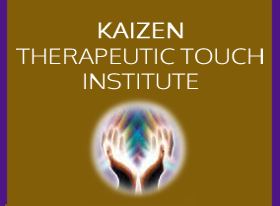Aghaabati et al. (2010) examined the effect of Therapeutic Touch on pain and fatigue of cancer patients undergoing chemotherapy. They conclude Therapeutic Touch can provide a non-pharmacological intervention for the pain and fatigue experienced by cancer patients.
Stephen et al. (2007) collected data at a conventional cancer facility in British Columbia which had been offering Therapeutic Touch since 1985. The facility offers assessment and diagnostic services, chemotherapy, radiation therapy and a rage of supportive care services including patient and family counseling for cancer. Research data were collected in 1995 and again in 1997-1998. Patients were asked their primary reason for using Therapeutic Touch. Most indicated they used it for treatment-related anxiety (78%) while others indicated it helped them cope with pain, insomnia and needle phobias. Patients said it reduced their anxiety as well as chemotherapy’s side-effects e.g., nausea and vomiting, pain, and sleeplessness. Breast cancer patients used Therapeutic Touch most frequently which is consistent with the general finding that breast cancer patients are more open to complementary and alternative treatments.
OUTCOMES OF THERAPEUTIC TOUCH ON PAIN
Coakley and Duffy (2010) measured levels of pain, cortisol and natural killer cells (NKC). Compared to those who received usual care, those receiving Therapeutic Touch had significantly lower levels of pain, cortisol levels and higher NKC levels.
Monroe (2009) conducted an analysis of five studies which examined outcomes of Therapeutic Touch on pain. She found a majority of statistically significant positive results from implementing Therapeutic Touch.
Newsham and Schuller-Civitella (2003) collected data for a continuous quality improvement (CQI) study. Their findings suggest that Therapeutic Touch, when provided in the clinical setting, promotes comfort, calmness and well-being among patients hospitalized for a variety of conditions (burns, degenerative arthritis, osteoarthritis, fibromyalgia). Patients reported being highly satisfied with Therapeutic Touch.
To control for the mind-body connection in outcomes of complementary modalities Gronowicz, et al. (2008) and Jhaveri, et al. (2008) treated cells in culture. Therapeutic Touch was chosen for these experiments because practitioners have extensive training and discipline. Gronowicz and her colleagues found that a specific pattern of Therapeutic Touch produced a significant increase in proliferation of fibroblasts, osteoblasts, and tenocytes in culture. Jhaveri and his colleagues found Therapeutic Touch appears to increase human osteoblast DNA synthesis, differentiation and mineralization and decrease differentiation and mineralization in a human osteosarcoma-derived cell line
REFERENCES
Aghabati, Nahid, Eesa Mohammadi and Zahra Esmaiel. “The Effect of Therapeutic Touch on Pain and Fatigue of Cancer Patients Undergoing Chemotherapy.” 7.3 eCAM ( 2010): 375-381. Print.
Coakley, Amanda and Mary Duffy. ‘The Effect of Therapeutic Touch on Postoperative Patients.” Journal of Holistic Nursing 28.3 (2010): 193-200. Print.
Gronowicz, Gloria, Ankur Jhaveri, Libbe Clarke, Michael Aronow and Theresa Smith. Therapeutic Touch Stimulates the Proliferation of Human Cells in Culture.” The Journal of Alternative and Complementary Medicine 14.3 (2008): 233-239. Print.
Jhaveri, Ankur, Stephen Walsh, Yatzen Wang, MaryBeth McCarthy, Gloria Gronowicz. “Therapeutic Touch Affects DNA Synthesis and Mineralization of Human Osteoblasts in Culture.” Journal of Orthopaedic Research 26 (2008): 1541-1546. Print.
Monroe, Carolyn.” The Effects of Therapeutic Touch on Pain.” Journal of Holistic Nursing 27.2 (2009): 85-92. Print.
Gayle Newshan and Donna Schuller-Civitella. “Large Clinical Study Shows Value of Therapeutic Touch Program “Holistic Nursing Practice 17.4 (2003):189-192. Print.
Stephen, Joanna, Gina Mackenzie, Sarah Sample and Jennifer Macdonald. “Twenty years of therapeutic touch in a Canadian cancer agency: lessons learned from a case study of integrative oncology practice.” Support Care Cancer 15 (2007): 993-998. Print.
Learn more about Therapeutic Touch research outcomes
Want to learn Therapeutic Touch? Go here:
If you are a cancer patient or know of one, ask us about the Kaizen Healing Teams to offer healing support for patients on their healing journey.





